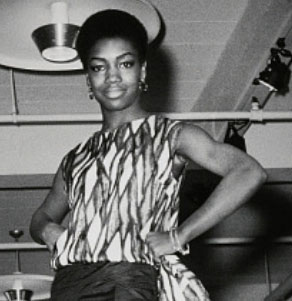Remembering Helene Nomsa Brath
By Cinque Brath
In our community, we often celebrate the louder voices—the ones who grab the microphone, lead the marches, and always seem to speak from the podium. But there are other kinds of leaders, just as powerful, who work from the heart and the home. Helene Nomsa Brath was one of those people.
Nomsa—the name given to her by a South African artist—can be interpreted to mean one who is compassionate, kind, or joyful. And she was all those things when the time called for it. But what many people may not know is that Nomsa was also a fighter. A quiet rebel. She could be gentle, but she was not timid. She could be warm, but she never compromised her convictions.
In fact, her rebellious spirit was so distinct that she was one of only about eight women featured in a British documentary about women who defied expectations in industries that demanded conformity.
Even as a young girl, she was already sharpening her skills as a dissenter. In the 2019 documentary You Say You Want a Revolution: Records & Rebels 1966–1970 by Emily Harris, Nomsa shared a childhood story that said everything about her character.
One day, she told her mother she was no longer going to straighten her hair. Her mother, unwilling to deal with her feisty daughter, passed the matter off to her brother—Uncle Harry—a no-nonsense Korean War veteran.
It was his job to “straighten her out.” But by the time Uncle Harry came out of the room, his booming voice echoed down the hall—but hers never did. She hadn’t raised her voice once, but her mind was firm. He emerged, defeated, and told his sister: “Helene is not changing. Her mind is made up. Leave it alone.”
That was Nomsa. You rarely see her shouting, but you knew where she stood.
So much of the progress in our community rests on the shoulders of women like Helene Nomsa Brath—women who raise both the children and the collective consciousness. They may not always be in the spotlight, but they are the movement’s heartbeat.
I remember another day—more turbulent, more dangerous—that showed her fierceness in a more physical form. A friend of one of my siblings had been arrested and, during interrogation, told police that he had passed a weapon to one of my brothers.
He even gave them our address. Officers came knocking—more like banging—on the door. At the time, my mother was asleep on the living room couch, surrounded by several of us younger children.
When one of my siblings opened the door, the police rushed in—into our home, filled with minors, without pause or permission. My mother woke up to what she thought were strange figures in blue. She sprang up from her sleep with catlike reflexes, yelling for the officers to get out of her house.
One officer was making his way toward the bedrooms. She pushed him—and the others—out the front door in one clean, defiant motion. They vowed to return with a warrant. She didn’t flinch. Her courage filled the room like fire.
That moment told me everything I needed to know: my parents were made for each other. Many people know the name Elombe Brath—Pan-Africanist, media strategist, activist. His name rings from Harlem to the Caribbean to Africa. But fewer know about the woman who stood beside him—not behind, but beside him. Her influence ran deep, though often more quietly.
Helene Nomsa Brath was a founding member of the Grandassa Models and the only woman to ever hold the title of President of the group. The Grandassa Models didn’t just promote natural Black beauty—they revolutionized it.
In the 1960s, when straightened hair and lighter skin were considered the ideal, Nomsa and her sisters in the movement wore Afros, African fabrics, and the kind of confidence that declared to every young Black girl: “You are enough—just as you are.”
She raised seven children while staying deeply involved in community organizing, cultural programs, and education. She did not seek headlines or accolades. She did what she did because she believed in Black people.
She believed in us. She believed in the power of love, community, and self-determination. She reminded us that history isn’t just what we read in textbooks—it’s what we do every day in our homes, neighborhoods, and lives.
Today, we see her legacy everywhere. In young girls wearing their hair natural. In families who open their homes to teach, protect, and organize. That’s Nomsa living on. That’s the power of her example.
So often, history overlooks people like Helene Nomsa Brath. But for those of us who knew her, who learned from her, who were shaped by her—she is unforgettable. This article isn’t just a tribute—it’s a reminder. A reminder that leadership doesn’t always mean being in front. Sometimes, it means holding everything together from behind the scenes.
I—and so many others—learned how to serve our community by watching her, day in and day out.
Today, her legacy lives not only in memory but in action: through stories shared, a Harlem street co-naming in her honor, murals that carry her image, and lives she’s touched. It lives in every act of resistance rooted in love, in every person who chooses community over ego, in every young girl who grows up knowing she’s beautiful just as she is.
And for that, we honor her. We remember her. And we carry her light forward.


